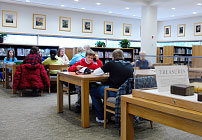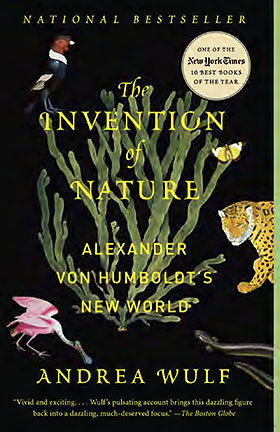This is a fun one because we are going to spend a lot of time actually talking about how they serve readers. We will begin with my keynote Rethink and then spend the rest of the day wrestling with the joy and frustration that is genre in great details. We will be talking about genre conventions and how to stay in genre shape, but it is the end of the day, when the attendees and I will work together to solve some of their trickiest real life patron questions, for which I am the most excited.
I will take notes on that conversation and share anything interesting here on the blog, but for now, here are all the links you need to follow along at home.
9:30-11am: RA Rethink: From Quaint and Comfortable to Cutting Edge: You can live without a 3D printer, but without readers’ advisory, you’re not doing your job. Readers’ advisory belongs in every library, no matter your budget or size. A robust and modern program that embraces whole collection discovery is one that inspires staff, engages patrons, and builds stronger library communities. Reconnect with this core service and empower staff at all levels to connect users with your collection. RA expert Becky Spratford will offer “rethinks” that will harken back to the basics of this core service and incorporate 21st Century possibilities. SLIDES
11-11:15am BREAK
11:15am-12:30pm Demystifying Genre: How To Help Every Type of Reader [in three parts]: Nothing is scarier than trying to help a fan of a genre you yourself don’t enjoy. You want to help that, for example, Romance reader find the perfect book, but you are having trouble knowing where to begin because...eek!... you don’t read Romance. You are afraid they will find out you are a fraud. How can YOU possibly help THEM?!? Never fear, in this program, Readers’ Advisory expert, Becky Spratford, will teach you how to keep your genre knowledge up to date, explain the biggest trends in genre fiction, and share her time tested tricks for working with genre readers. You will leave this webinar with the confidence and skill to help fans of every genre, regardless of whether you have ever read a book in that genre. And that will leave a trail of happy patrons in your wake.
Part 1 will focus on genre conventions. SLIDES for Part 1
12:30-1:30pm- LUNCH
1:30-4 Demystifying Genre Parts 2 and 3-- Part 2 will focus on how to use resources, including NoveList to help genre readers. Part 3 will be workshop style. Please bring your real life questions, inquiries about helping difficult patrons, and most difficult RA concerns and we will work through them together. [There will be a 10 minute break during this afternoon session] SLIDES for Part 2














